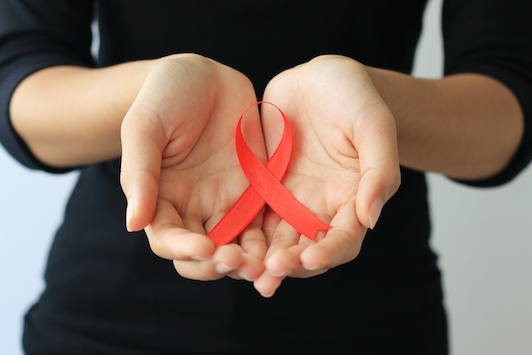HIV care and treatment has come a long way but there is a hurdle we continue to struggle to overcome. In the past 40 years of the HIV epidemic, we have gone through phases of devastation, discovery, and now the end of the HIV epidemic. The first phase of the HIV epidemic in the 1980-early 1990s was marked by the devastation of many lives lost. It was the story of a mysterious illness, newly named “AIDS”, identifying a virus as its cause, and having no cure. The discovery of effective treatment with triple therapy of antiretrovirals in 1996 changed the course. Over the next decade and a half, treatment options snowballed going from highly complicated cocktails with handfuls of medications to simple one tablet once daily regimens. Not only could patients live long healthy lives with minimal risks from treatment, but we also learned that being on treatment dropped the risk of spreading the virus. In fact, having the virus well controlled completely prevents sexual transmission. Testing early and initiating treatment can eliminate the spread of HIV – yet according to the Public Health Agency of Canada, someone in Canada is newly infected with HIV every four hours. Something is holding us back from stopping HIV.
One cannot talk about HIV without talking about stigma. Stigma is inextricably intertwined in the HIV epidemic. Stigma is prejudiced attitudes and beliefs, as well as discriminatory behaviour or policy, that leads to exclusion. Being marginalized by society causes chronic stress, and challenges with coping. It can, as a result, keep people from being tested, engaged in care, and treated successfully. Evidence that stigma is a barrier to an effective HIV response continues to grow, particularly for key populations such as men who have sex with men, persons who have been incarcerated, and people who inject drugs. These individuals tend to bear the largest burden of HIV and often experience multiple intersecting stigmas.
HIV stigma is not a stand-alone. There are all kinds of stigma that worsen health outcomes including stigma based on race, gender, sexual orientation, and poverty. The Canadian Institute of Health Research has created a wheel (see image) showing how different components can intersect. These overlapping identities create multiple pathways for oppression and the effects of these experiences on health and well-being do not just add together, they multiply. Thinking about stigma in terms of intersectionality allows us to think about this problem more holistically, as well as allows us to consider protective factors such as social support, community, and resilience. Addressing stigma and the inequality it creates is key to ending HIV.
Equity, diversity, and inclusion (EDI) can be applied to patient care as an anti-stigma framework. Diversity is understanding the background of the patients being served – their culture, gender, sexual orientation or religious beliefs. While equality is about giving to everyone equally, equity is about giving based on need. Health inequities perpetuate to the most vulnerable populations, the ones that are also often the hardest to reach. Applying equity in patient care is to see who is falling behind and make changes to ensure they have what they need to be able to receive and benefit from best practices. Affected groups should be centered at the core of the response with real engagement to make meaningful change. Inclusion is practiced by giving patients a voice in the delivery of their care that is appropriate to them both as an individual and as a population.
Innovative approaches in HIV care have been developed using an EDI lens to make health care accessible to the most vulnerable. For testing, new simple tests remove the need to test in a lab or health clinic and later return for results. People can now be tested at home or in non-healthcare environments and get a result in minutes. Engaging patients in HIV care is key to getting on and staying on effective treatment. Approaches to engaging patients include using case managers to follow up or outreach workers to manage care where the patient is, or outreach to settings such as bath houses or prisons, and leveraging peer support. It also includes coordinating across sectors to meet patients needs for transportation, housing, and mental healthcare to set them up to access care.
The challenges and progress in HIV care give insight into caring for marginalized patients broadly. The healthcare system can cause harm through systemic racism, discrimination, and individual provider bias. It often results in medical avoidance affecting individuals’ health, increased costs to the health system, and health and economic effects on society. Addressing stigma in care through EDI requires a multi-level approach: government or policy level (address structural component that marginalizes people), the organizational or institutional level (policies, partnerships), and the individual level (information, skill building). Health care needs to be culturally safe, consider the trauma people have experienced, and create an environment where everyone can feel safe to get help.
By Caitlin Olatunbosun
Caitlin Olatunbosun bsp, acpr, mph is a clinical practice leader with Alberta Health Services and works in hiv.


